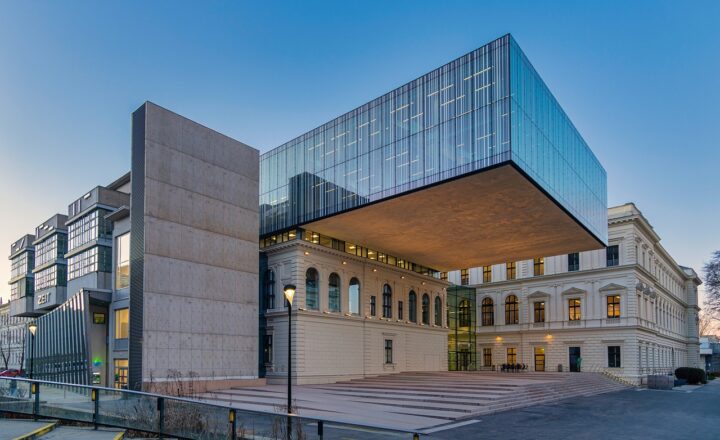
Education has been a vital part of human civilization, evolving over thousands of years from informal lessons in local communities to structured education systems we see today in schools around the world. This article explores the remarkable journey of education, examining how various cultures have contributed to its development and the key factors that have shaped our current educational systems.
1. The Origins of Education: Informal Learning
The earliest form of education was informal and community-based. In prehistoric times, knowledge was primarily transmitted orally from generation to generation. Parents taught their children survival skills, hunting techniques, and social norms. This informal learning was crucial for passing down essential information to ensure the survival and development of the group.
During this period, education was highly practical, focusing on skills needed for daily life rather than theoretical knowledge. Indigenous tribes around the world relied on elders to teach the younger generations through storytelling and hands-on experience. This process fostered a strong sense of community and identity.
2. The Rise of Formal Education: Ancient Civilizations
As societies became more complex, the need for formal education grew. The earliest structured education systems can be traced back to ancient civilizations such as Egypt, Mesopotamia, China, and Greece.
– **Mesopotamia**: The Sumerians established cuneiform writing, leading to the creation of scribal schools where boys were trained in writing, mathematics, and administrative tasks crucial for governance.
– **Ancient Egypt**: Education was primarily for the elite, with schools dedicated to training scribes. Mathematics, geometry, and religious education were central components.
– **Ancient China**: Confucianism emphasized the importance of education, leading to a system where scholars prepared for civil service exams. Education was viewed as a pathway to social mobility.
– **Ancient Greece**: Philosophers like Plato and Aristotle laid the foundation for Western education. The concept of the ‘academy’ emerged, focusing on philosophy, arts, and sciences.
These early formal systems set the stage for more organized and widespread education, leading to the establishment of institutions that would evolve into today’s schools.
3. The Medieval Period: Monastic and Cathedral Schools
During the medieval period in Europe, education became closely tied to the Church. Monastic schools were established to educate clergy and preserve religious texts. Subjects taught included theology, arts, and philosophy.
With the establishment of cathedral schools, education began to transition from religious instruction to a more generalized curriculum. The *University of Bologna* (founded in 1088) and the *University of Paris* (c. 1150) emerged as early centers of higher education, focusing on law, arts, medicine, and theology.
The curriculum was rigorous, with a focus on classical texts and late Antiquity. The medieval education system laid the groundwork for the modern university model, emphasizing structured learning and specialized subjects.
4. The Renaissance and the Humanist Movement
The Renaissance (14th to 17th century) represented a significant turning point in educational development. This period of renewed interest in classical knowledge inspired the Humanist movement, which emphasized the study of humanities such as literature, philosophy, and history.
– **Educational Reform**: Thinkers like Erasmus and More advocated for education accessible to a broader population, emphasizing the importance of critical thinking and the arts.
– **Printing Revolution**: The invention of the printing press in the 15th century made books more accessible, democratizing education and spreading knowledge more rapidly.
During this time, schools began to emerge outside church control, fostering a more secular approach to education. This shift laid the foundations for the varied and expansive education systems of today’s society.
5. The Industrial Revolution and Public Education
The Industrial Revolution marked a pivotal change in education, leading to the establishment of formal public school systems. The rapid urbanization resulted in the need for a literate workforce, prompting governments to implement compulsory education.
– **Horace Mann’s Influence**: In the 19th century, Horace Mann in the United States advocated for universal public education, arguing that education should be free, non-sectarian, and universal. Mann’s efforts led to the establishment of the first public schools.
– **Global Initiatives**: Countries in Europe and beyond adopted similar public education policies, recognizing the role of educated citizens in a democratic society.
Education began to focus more on preparing children for the workforce, promoting subjects like mathematics, reading, and writing, which were crucial in industrial society.
6. Modern Education Systems: A Global Perspective
Today’s education systems vary greatly across the globe but commonly include elements such as structured curricula, standardized testing, and a focus on accountability. Several key characteristics define modern education:
– **Diversity of Approaches**: Educators now employ various pedagogical methods, including Montessori, project-based learning, and digital education, accommodating different learning styles.
– **Technology Integration**: The advent of digital technology has transformed education, with online learning platforms and digital classrooms reshaping how knowledge is imparted.
– **Globalization of Education**: International organizations such as UNESCO advocate for educational equity and quality, emphasizing the importance of education as a global human right.
As education continues to evolve, the challenges of equity, access, and relevancy remain paramount. The global community continues to push for educational reforms that address these issues and meet the needs of learners in our complex and rapidly changing world.
Conclusion
The journey of education from informal lessons to structured schools reflects humanity’s evolving needs and values. Education remains a fundamental pillar of societal development, shaping individuals and communities alike. Understanding this historical context helps us navigate the future of education as we work toward equitable and effective systems for all learners around the globe.
As we continue to witness the transformation of education in the digital age, let us appreciate the historical roots of learning and strive to build systems that not only impart knowledge but also foster critical thinking, creativity, and lifelong learning in the generations to come.








